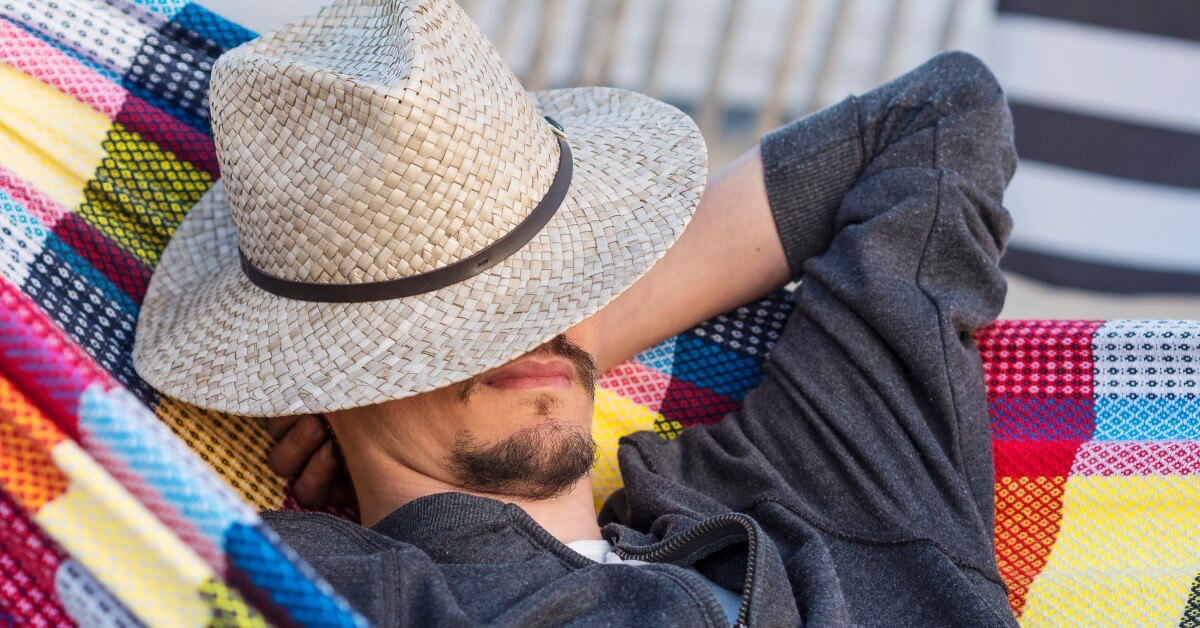Siesta | Inemuri | Vamkukshi | Todoet Poeles | Schedule-free Sleep in Botswana | Muñeca Quitapena | Scandinavian Outdoor Naps
Overview
We often hear about the unique and interesting ways people approach food, customs, and traditions worldwide.
In our more immediate western world, we look at sleep specifically as an essential pillar of health. We are generally aware that most of us need about eight continuous hours.
But sleep can be looked at as not just a physiological function. It’s also a cultural one subject to significant variance where core values, beliefs, and behaviors strongly influence how we get our rest.
So, if you think that sleep should flow in only one direction, read on for some different perspectives from around the globe.
Siesta
Originating in Spain and practiced in many other Mediterranean and subtropical countries, a siesta or an afternoon nap is had after the midday meal, usually the heaviest of the day.
Although well-known worldwide, the practice is being abandoned by the modern workforce in the country of origin – which is a shame, as past studies have shown that siestas can result in a 37 percent reduction in coronary mortality.[1]
Inemuri
If you find yourself in a business meeting in Japan and you notice someone at the table sleeping while sitting upright, this is perfectly normal.
Inemuri is the practice of sleeping in a seated position that developed during Japan’s rapid industrialization in the 1970s and 80s.
Due to longer work hours, this left less time for one continuous sleep duration. The result was this small nap that can be had in a place of work, but only if one remains upright as if to be ready to jump into action when necessary.
Far from being looked at negatively, inemuri is seen as a sign of diligence.
Vamkukshi
In India, yoga has its style of a small post-lunch nap. The term vamkukshi means lying on one’s left side. In ayurvedic practice, this is thought to aid digestion and prevent reflux.
This nap is prescribed as no longer than 15 minutes and is best done in the summertime.
Todoet Poeles
Literally, “Fear Sleep” is a Balinese practice of instantly being able to fall asleep as a reaction to a stressful or frightening situation.
The technique known as todoet poeles has been proven to be an effective way to induce calm and help with clarity of response to the situation. It’s not recommended for situations involving oncoming traffic.
Schedule-Free Sleep in Botswana
Good sleep hygiene often starts with establishing and following a sleep schedule of going to bed and waking up at the same time.
Not so for a hunter-gatherer tribe in Botswana called the !Kung. In this tribe, sleep is viewed as fluid with no actual boundaries of time. Therefore, one sleeps only when they feel tired – no matter the time of day or night!
Muñeca Quitapena
In Guatemala, the practice of confiding in worry dolls, known as muñeca quitapena, is common to this day. These are tiny, handcrafted dolls stemming from the Mayan tradition where one whispers their worries to them and then places them under their pillow.
The jury’s out on whether the doll is doing its job by absorbing the worries or the act of unloading one’s stresses before attempting sleep works to calm the mind into a space ready for rest.
Scandinavian Outdoor Naps
Many people who have visited Sweden, Norway, or Iceland remember being puzzled when they noticed seemingly abandoned baby strollers outside restaurants, cafes, and shops.
However, there’s no need to worry, as this is an ancient practice that survives to this day.
It’s believed that allowing infants and children to sleep outside (especially when the temperatures are cooler) is healthier and provides a more restful sleep and, therefore, helps them grow into healthier adults.
Conclusion
Cultural factors can determine whether sleep occurs in one consolidated session, like in the Western world, or short spurts at work, as some do in Japan.
However, whether you sleep on demand like the !Kung of Botswana or take in a siesta after a big lunch, one fact remains the same: humans need sleep to be at their healthiest and best, so make sure you get yours no matter where you are.
References:
- Naska A, Oikonomou E, Trichopoulou A, Psaltopoulou T, Trichopoulos D. Siesta in healthy adults and coronary mortality in the general population. Arch Intern Med. 2007 Feb 12;167(3):296-301. doi: 10.1001/archinte.167.3.296. PMID: 17296887.






